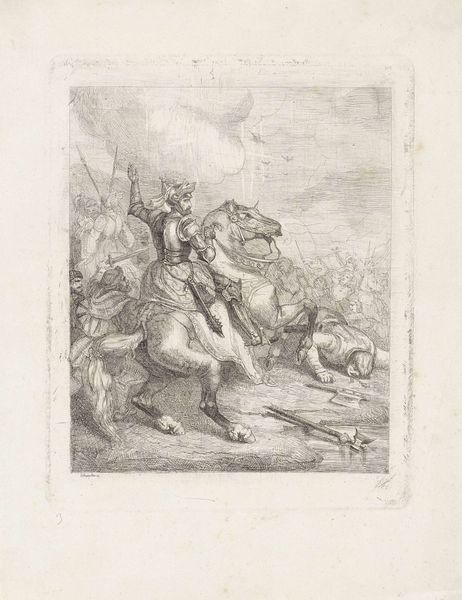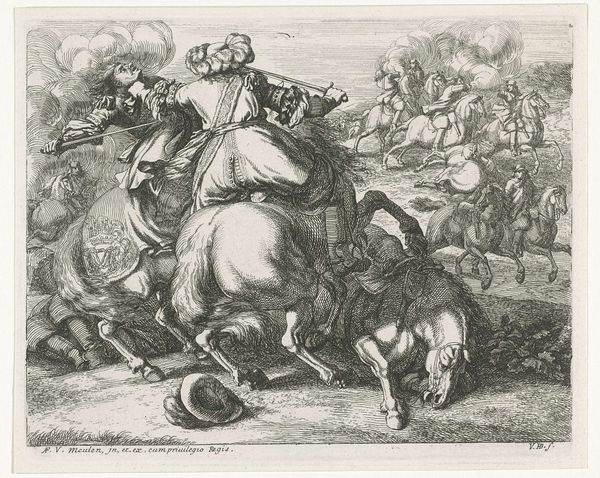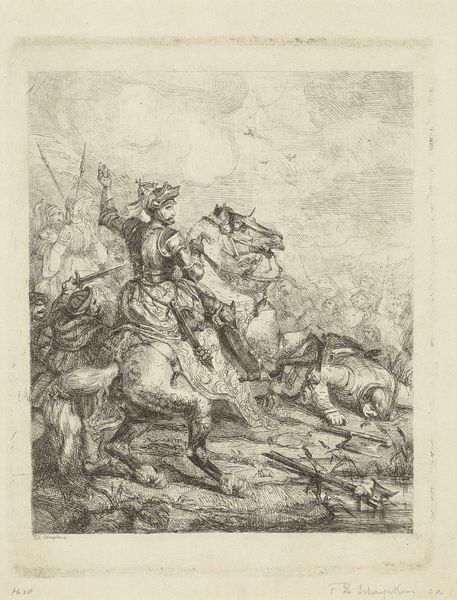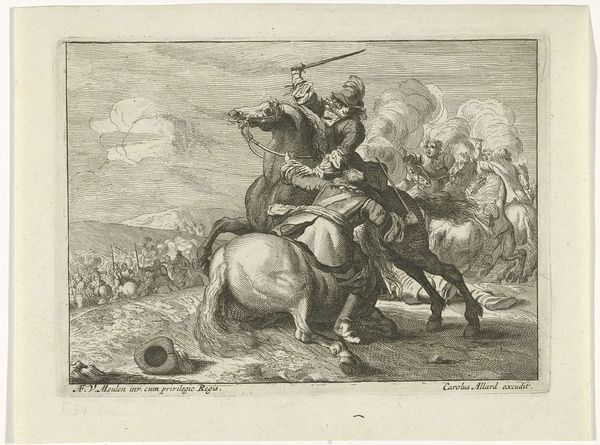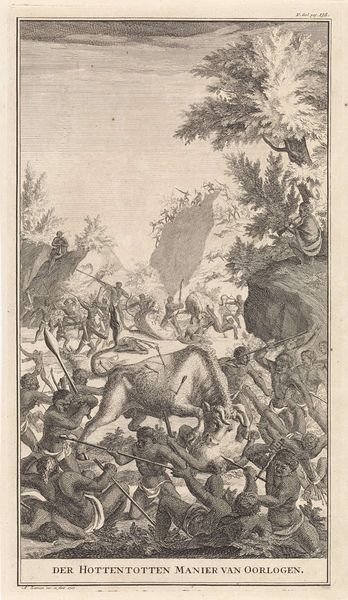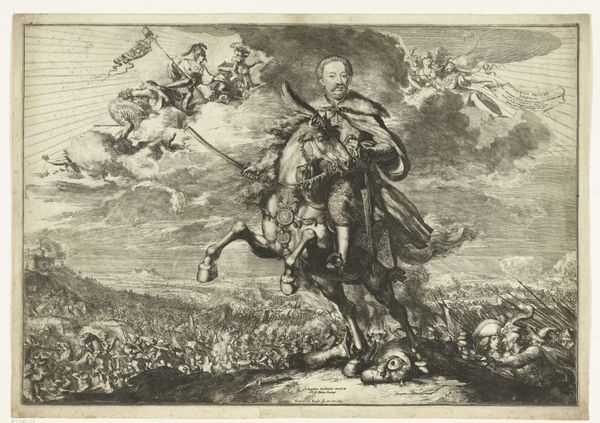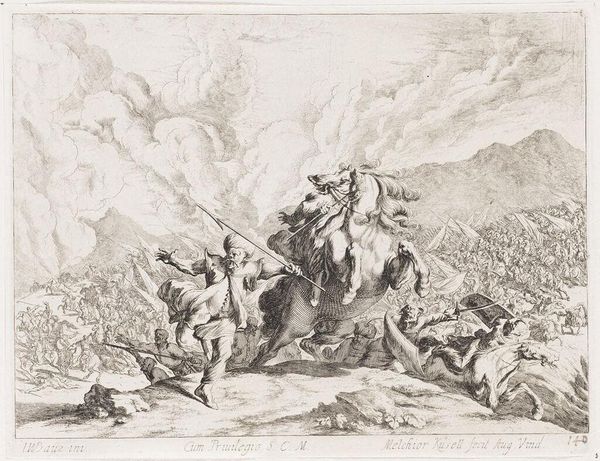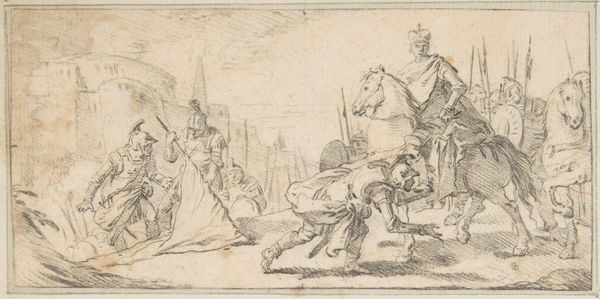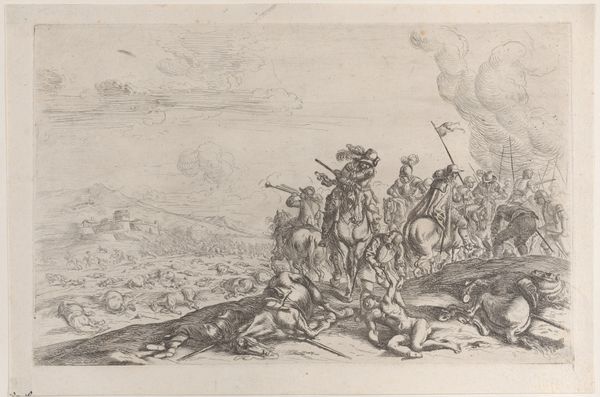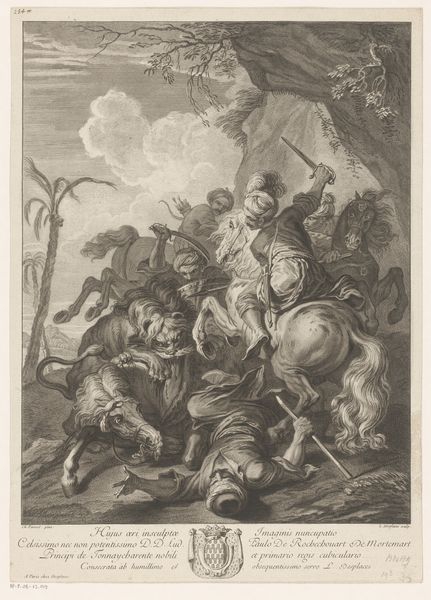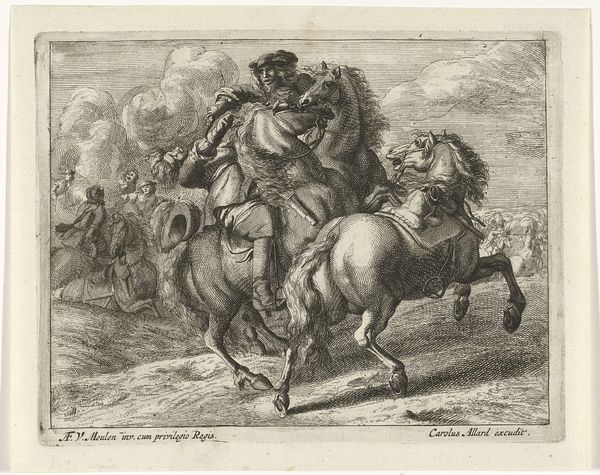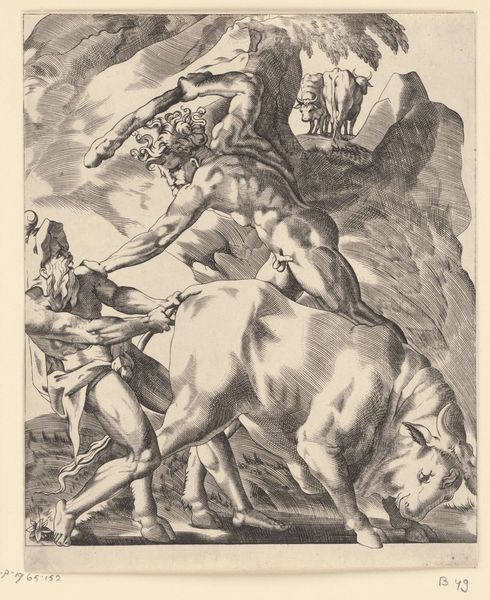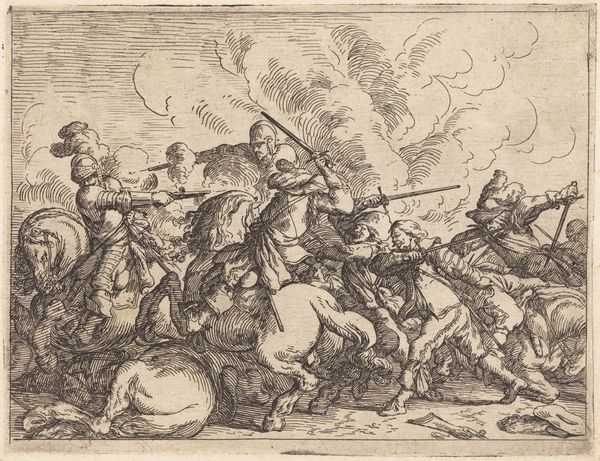
print, etching
# print
#
etching
#
landscape
#
figuration
#
romanticism
#
history-painting
#
academic-art
#
realism
Dimensions: height 259 mm, width 209 mm
Copyright: Rijks Museum: Open Domain
Curator: Looking at this etching, it has an air of academic art. The Rijksmuseum holds this print by Theodoor Schaepkens from 1835; it depicts Keizer Hendrik II de Heilige te paard in een veldslag, or Emperor Henry II the Holy on horseback in battle. Editor: The scene is really dramatic. Even though it's monochromatic, the composition immediately conveys the chaos of war. You can almost feel the weight of the emperor's armor and the intensity of the moment, etched so meticulously. Curator: Schaepkens, working in the Romanticism style, often revisited historical themes to construct cultural narratives. What stands out here is Henry II's elevated position. While combat ensues, the leader remains mounted, set apart. His symbolic removal and potential salvation link to that specific Romantic need. Editor: Right, he’s very composed amid the disarray of the battlefield below. Are there established symbolic traditions about leaders on horseback, the emotional undercurrent here suggests less about the grim reality of the fight itself. How do the image choices support the message and mood? Curator: Throughout art history, the horse symbolized status, power, control, a direct representation of cultural power and rule. Presenting Henry II like this, the artist communicates this narrative effectively, reminding viewers about traditional authority. Also note the men who have collapsed below and weapons cast off. Editor: So, in essence, we are witnessing a historical tableau framed by socio-political ideology in this romantic era, with that particular brand of the glorification of power that marks a certain interpretation of leadership. Curator: Precisely, and beyond his position, he holds up his hand. That is itself an important aspect of understanding his historical symbolism here and this particular heroic articulation. Editor: Well, thank you for putting the visual symbolism into such accessible historical terms. This Romantic reading of power raises critical ideas to bring with us to other rooms in this collection.
Comments
No comments
Be the first to comment and join the conversation on the ultimate creative platform.
